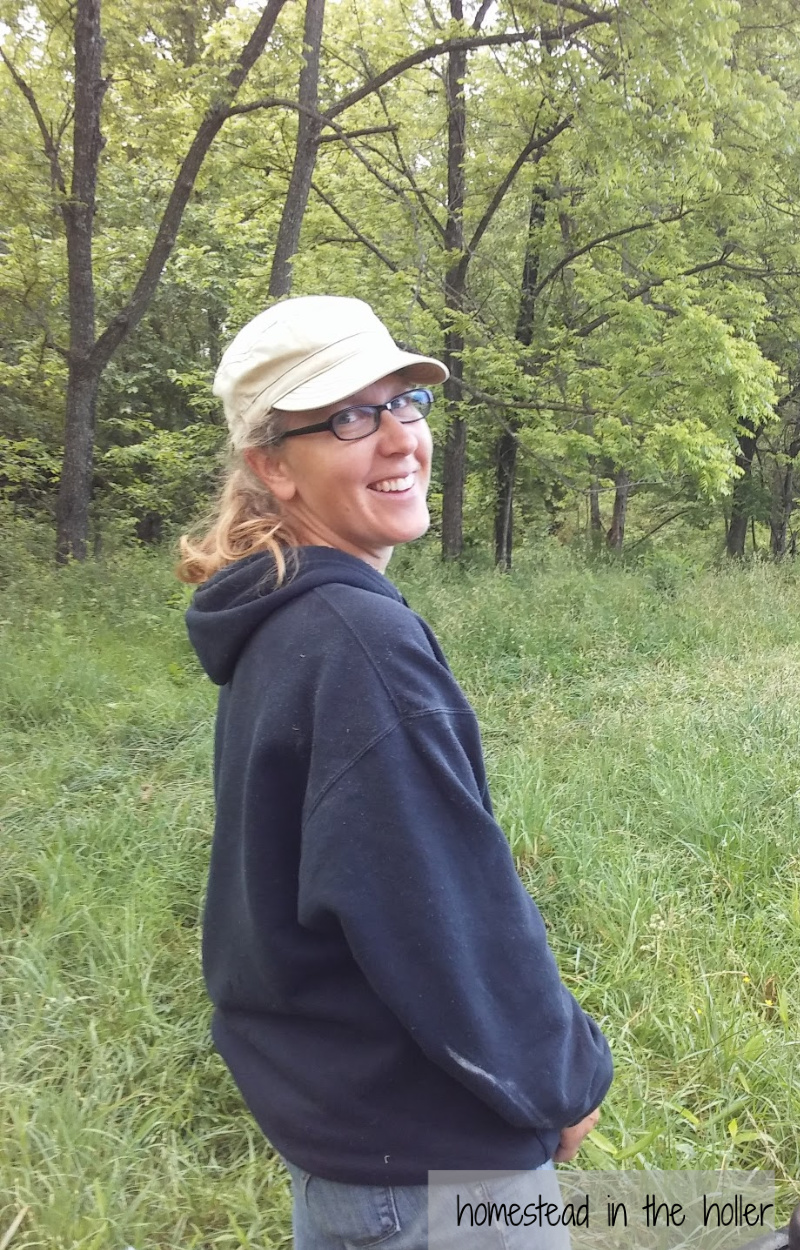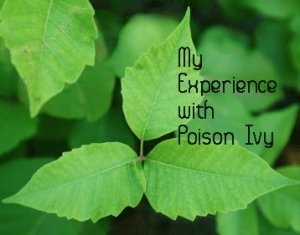Homestead in the Holler is a participant in the Amazon Services LLC Associates Program, an affiliate advertising program designed to provide a means for sites to earn advertising fees by advertising and linking to amazon.com.
Poison ivy is something that you typically look out for in the summer. However, you need to be cautious in the fall as well. The poison ivy plants still retain urushiol, the oil allergen that can cause an allergic skin reaction, even when the plants are dead. In fact, even the roots have urushiol on them.
I found this out first hand when planting our fruit trees the beginning of November. Most of our fruit trees were planted in a grassy area. But some were planted in an area from which we had cleared out brambles. Apparently there was poison ivy growing somewhere among the brambles, as a day later, I noticed a couple angry red streaks on my right forearm and the back of my hand. I didn’t see any poison ivy during the planting, but we had had a couple hard frosts so everything was rather brown and dead. To keep myself from scratching the spots, I covered them with a bandage. No big deal.
The Rash
When I took the bandage off to check on the rash, I realized that I had reacted to latex in the bandage. Lovely. Within a day, the poison ivy rash had covered the bandage rash and was very itchy. Things just went from bad to worse from there. By the 3rd week, my arm had swollen like a sausage from elbow to fingers and the blisters were quite large and spreading. I had also developed the poison ivy rash on random spots, (leg, neck and chest) that had not been exposed. After doing some research, I found that if poison ivy gets near a cut, or open skin (in my case, the rash from the bandage) that the urushiol can get into your blood stream and go systemic.
It was looking pretty bad, but fortunately I have a friend that is an herbalist. She knows plants and the uses for plants like the back of her hand. I have so much to learn from her! I really did not want to go to the doctor’s office, so I decided to call her and see if she had any ideas on how to treat poison ivy. I am so glad that I called her. Having an herbalist around as a resource is awesome!
Jewelweed salve
My herbalist friend immediately recommended jewelweed. Jewelweed, or Touch-Me-Nots grow along creek beds in humid woodlands. Every summer, she goes out and picks all of the flowering jewelweed that she can find. She then cuts up the stems and puts them in olive oil. After they have infused for a while, she has a very effective salve for poison ivy. Jewelweed contains chemicals that neutralize the components responsible for the skin-irritating effects of poison ivy. It is also effective for other irritants including insect bites and ringworm. I’m definitely keeping some jewelweed salve around!
I applied the salve to the poison ivy rash as needed. The salve immediately helped with the itch. It was very soothing. The salve definitely helped with the poison ivy on my left arm.
Grapefruit Seed Extract
Grapefruit Seed Extract is made from the seeds, pulp and white membranes of grapefruit. It is often used as a natural antibiotic, effective for bacterial, fungal and viral infections. My friend recommended that I take this since my arm was swelling and we wanted to prevent infection.
Unfortunately, my poison ivy rash on my right arm was more than what jewelweed salve and grapefruit seed extract alone could help. I did get relief from the itch and the swelling stayed about the same, but it really didn’t get any better either. I think if I had started right away with this treatment instead of waiting 2 weeks, I would have had success. It was time to bring in the big guns.
Activated Charcoal Paste
Activated Charcoal is well known as an antidote as it can absorb most organic toxins, poisons and chemicals from the body. In my case, the charcoal would absorb the urushiol, which would reduce the swelling and the rash would go away. If this didn’t work, I decided that I would go see a doctor in the morning.
To make a paste, mix the charcoal with water until it has the consistency of soft serve ice cream. I applied the activated charcoal paste to my arm for about 4 hours, adding more paste about every 30 minutes which was when the charcoal paste started to dry out. It’s a very messy process; you will get charcoal everywhere. In a attempt to prevent a mess, I wrapped my arm in paper towels, seran wrap and a large rag on top of it all. Within 24 hours, the swelling was drastically reduced. In 48 hrs, minor swelling in my elbow and the blisters were drying up. It worked!
It has now been nearly 5 weeks since I was first exposed to poison ivy. My right arm is peeling like I had a severe sunburn, but the swelling is gone and I am healing.
Lesson learned, when going out to do fall planting, winter clean up, or whatever you may find yourself doing on a nice day in fall/winter, keep an eye out for poison ivy. That stuff is wicked.

Hi! Around here I wear many hats. Homesteader, farmer, homemaker, homeschool mom, gardener and builder. We strive for a simple, self-sufficient life on our little piece of paradise. Read more



3 responses to “Poison Ivy”